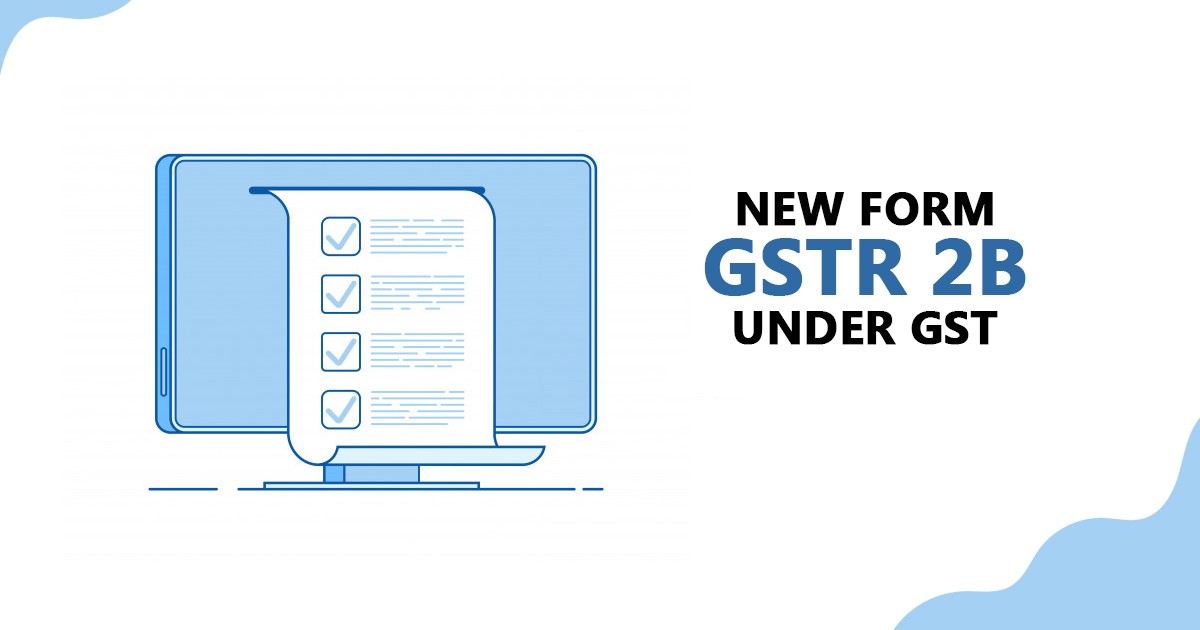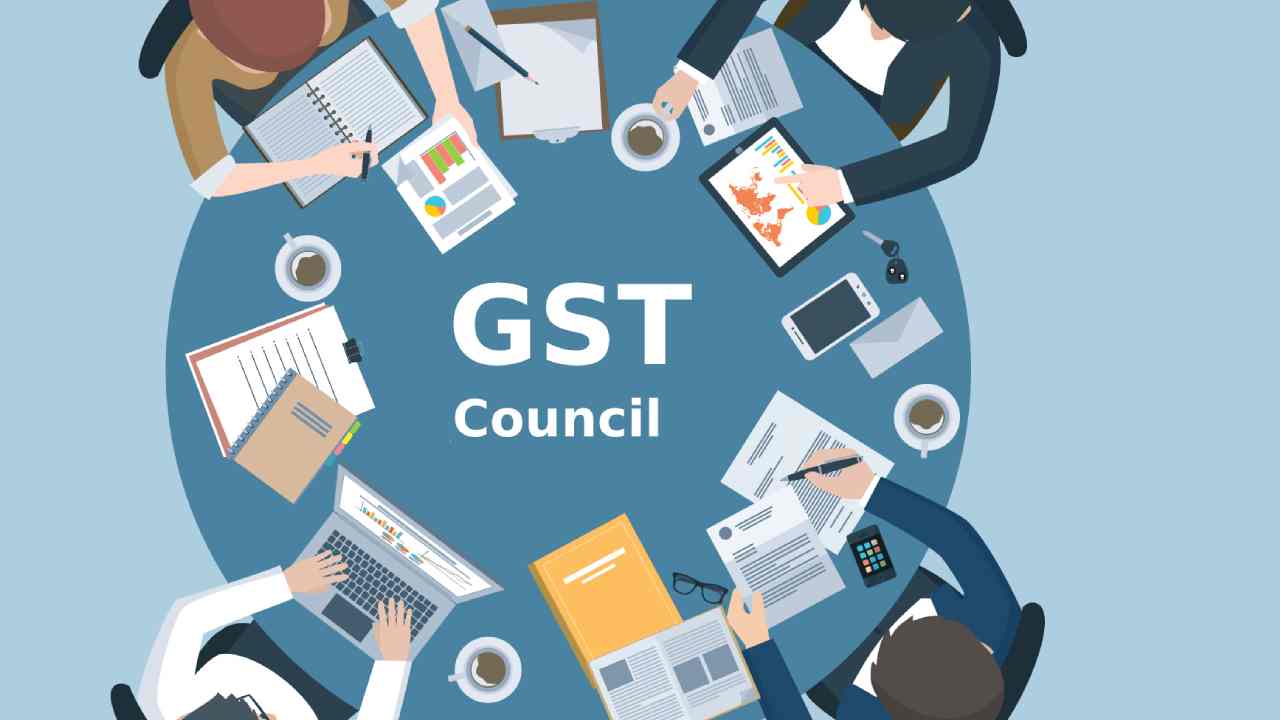GST Council in its 39th meeting held on 14th March, 2020, recommended linking the data available in GSTN portal viz linking outward supply data in GSTR-1 and GSTR-3B and also linking of Input tax credit data between GSTR-2A and GSTR-3B. Subsequently, the Central Government issued a press release on 29th August, 2020 and introduced a new statement in Form GSTR 2B, data of which would be auto-populated in Table 4 (Eligible ITC) of GSTR 3B.
As communicated, GSTR-2B is made functional for July 2020 on a trial run, however, for the subsequent tax periods the same should be fully operational. Thus it is important that we should understand the nuances of GSTR-2B and its impact on our GSTR-3B return filing.
1. What is GSTR-2B
Advisory provided on the common portal explains the following:
a. GSTR-2B is an auto-drafted ITC statement generated for every registered person (other than composition dealer) based on GSTR-1, 5 (non-resident taxable person), and 6 (input service distributor) filed by supplier.
b. GSTR-2B is a static statement available for each month on the 12th of the succeeding month. E.g.: August 2020 statement available on 12th September 2020.
c. GSTR-2B for a month (M) contains all documents filed by suppliers between the due date of furnishing of GSTR-1 for the previous month (M-1) to the due date of furnishing of GSTR-1 for the current month (M).
E.g. for August 2020, documents filed by suppliers from 00:00 hours on 12.08.2020 to 23:59 hours on 11.09.2020 will be included in GSTR-2B generated on 12.09.2020. If there is delay in filing of such GSTR-1 and suppose it is filed on 12.09.2020, then such amounts will be captured in the GSTR-2B generated for month of September, on 12.10.2020.
d. Instances where the return due date is later than the date of generation of GSTR 2B, it is advised to avail ITC on a self-assessment basis.
e. The documents would reflect in the next open GSTR-2B of the recipient irrespective of the date of the document. E.g. INV-1 dated 15.08.2020 uploaded in September 2020 return filed on 11.10.2020, it would be reflected in GSTR-2B of September 2020 generated on 12.10.2020 and not in GSTR-2B of August, 2020.
2. How to download GSTR-2B
- For downloading GSTR-2B you need to login to the GST Portal.
- Then you need to go to Returns Dashboard.
- Then “Select Return Period”
- Then Click on “Form GSTR-2B View / Download”
3. Why GSTR-2B
The facility of view / download GSTR-2B on the GSTN portal is for assisting the tax payers in reconciling and matching the Input Tax Credit periodically. Repetitive download of the previous month data would not be required as in GSTR 2A.
Data of ICEGATE is made available in GSTR-2B relating to the import of goods from overseas and inward supplies from SEZ, to ensure ITC has not been missed out.
Taxpayers can now reconcile data generated in GSTR-2B , with their records and books of accounts. This will help tax payer is applying ITC restriction mandated in Rule 36(4). Also Rule 36(4) reconciliation would not be required to be performed on year to date basis every month from July,2020 onwards, as the GSTR 2B report is static. However for period October 2019 to June 2020, year to date reconciliations along with monthly reconciliations are suggested.
Upload of GSTR 2A is required for claiming refund of unutilized ITC for exports and supplies to SEZ without payment of tax and on account of accumulation due to inverted duty structure. However, it appears that after implementation, the upload of GSTR 2B may be required for filing a refund application.
Due to the reconciliation , tax payer would be able ensure (subject to certain limitations discussed later) following while filing GSTR-3B:
- No credit is taken twice
- Credit is reversed as per law and
- Tax on reverse charge is paid correctly.
4. Comparison of GSTR 2A and GSTR 2B
| Comparison points | GSTR 2B | GSTR 2A |
| Nature | Static – Details uploaded by vendors after the cut-off date considered in the subsequent period. | Dynamic, as it changes from day to day, as and when the supplier uploads the documents. |
| Frequency | Monthly | Monthly |
| Source of information | GSTR 1, GSTR 5, GSTR 6, ICEGATE system – Would not provide details of TDS & TCS deductions. | GSTR 1, GSTR 5, GSTR 6, GSTR 7, GSTR 8, ICEGATE system – BoE details recently updated. |
| Usefullness | Very useful in ITC reconciliations (especially Rule 36(4)), and to identify compliant/non-compliant vendors. | Very difficult to ensure all GSTR 2A credits are considered as vendors may delay filing returns. |
| Features | Online portal has various features (discussed later in the article) | Limited features. |
5. Contents:
- Summary statement showing ITC available and non-available for every section.
- Advisory for every section that clarifies the kind of action that taxpayer must take in GSTR-3B.
- Document-wise details such as invoices, credit notes, debit notes, etc to view and download.
- Cut-off dates and advisory for generating and using GSTR-2B.
- Input tax credit on import of goods and import from SEZ units / developers (available from GSTR-2B of August,2020 onwards).
6. Key Features:
a. Documents more than 1000 count:
i. If the total number of documents across all tables is more than 1000 documents, then the download button will be disabled in view mode. However, a view of a specific document could be possible if GSTIN number, Invoice Number, and Invoice Date is entered. (in Return Dashboard>Select Tax Period >GSTR 2B View> Summary/ALL Tables).
ii. In such a case, taxpayers may download the excel/JSON from the GSTR-2B download page, by using the link given in the information message below the summary table.
b. Data available: Summary level data, vendor level data, and invoice level data would be available for view on the portal and download in excel also.
c. Expand/Collapse:
i. Expand/collapse all the sections available in the GSTR-2B summary in view mode.
ii. By default, all the sections in the GSTR-2B summary are in collapse mode.
iii. After expanding any section one can click on any subsection and if record available would reach to invoice level data.
d. Display/Hide column in view mode: A specific column can be hidden or displayed on the portal which could be helpful for further analysis.
e. Record per page – User may fix the number of records per page which. Max 100.
f. Filter option: The filter option available at document wise view option can be used to filter based on the following and even data can be downloaded after filtered.
i. Invoice/Note/ISD Document date/Bill of entry Date,
ii. Note Type: Credit note and Debit note
iii. Invoice type/Note Supply type – Regular, Deemed Exports, SEZ Supplies (with or without payment of tax), and Intrastate supplies attracting IGST.
iv. ISD Document type
v. Supply attract reverse charge – Yes / No,
vi. GSTR 1/5 filing date,
vii. ITC availability – Yes / No,
viii. Applicable % of Tax rate – 65% / 100%.
g. Search: Search functionality is applicable across the columns for the table being viewed. Characters allowed in the search functionality are numbers (0 – 9) characters (A – Z) and special characters ( / ‘ – . ).
h. Reference of Table no. of GSTR 3B: In view mode on the common portal, a summary of each section has the reference of table number of GSTR 3B in which credit of specific invoice can be availed/not availed. The same is available in the downloaded excel.
i. View/Download: Available online as well as in download form on click of a button rather than requesting and waiting for 20mins.
j. Date of filing by supplier: Date of filing of GSTR 1 and GSTR 5 by the supplier is available in view mode as well as download in excel. This could be helpful to understand when such document is filed by the supplier
7. Detailed understanding of each table in GSTR-2B
| Sr no. | Table | Contents | Table of GSTR 3B | Remarks |
| Table 3 Part A – ITC available | ||||
| 1 | Section I | Invoices and Debit notes including amendment filed by the supplier in GSTR 1 and 5 | 4(A)(5) | 1.RCM not covered 2.Negative value due to amendment to be disclosed in Table 4(B)(2) |
| 2 | Section II | ISD invoices Invoices including amendment | 4(A)(4) | Negative value due to amendment to be disclosed in Table 4(B)(2) |
| 3 | Section III | Invoices and debit notes pertaining to RCM supplies declared and filed by the supplier in GSTR 1 | 3.1(d) & 4(A)(3) | Not Covered: i) RCM on import of services (to be entered in Table 4(A)(2). ii) RCM on supplies from unregistered suppliers. |
| 4 | Section IV | IGST paid on import of goods from the overseas and inward supply of goods from SEZ units/developers on the bill of entry including amendment | 4(A)(1) | 1. Available from August 2020 onwards (i.e. 12th Sept 2020). 2. Import through courier not covered. 3. Difference between the Bill of Entry date and ICEGATE reference date is not provided. |
| Table 3 Part B – ITC reversal | ||||
| 5 | Section I | Credit notes received including amendment declared and filed in GSTR-1,5 and 6 | 4(B)(2) | Negative values – then credit may be reclaimed subject to reversal on an earlier instance. |
Table 4 –”ITC not available” ITC on invoice and debit note for information only will not be availed in Table 4(A) of GSTR-3B. Same tables would be available as discussed above for ITC available (Table 3).
Following are the invoices and debit notes covered in this table
i. Recipient not entitled to take the credit based on a time limit in Section 16(4) of the CGST Act.
ii. Invoice or debit note where the Supplier (GSTIN) and place of supply are in the same State while the recipient is in another State. (Ex: accommodation services)
However there may be other scenarios for which input tax credit may not be available to the taxpayers and same has not been captured above in GSTR-2B. Taxpayers should self -assess and reverse such credit in their GSTR-3B.
See GSTN Video on GSTR-2B
8. Illustrations:
a. Comparison between GSTR 2A vs GSTR 2B
| Sr No | Date of invoice | Reported in GSTR 1 of tax period | Date of filing of GSTR 1 by supplier | GSTR 2A | GSTR 2B |
| 1 | 15.08.2020 | Aug 2020 | 11.09.2020 | Aug 2020 | Aug 2020 |
| 2 | 15.08.2020 | Sept 2020 | 11.10.2020 | Sept 2020 | Sept 2020 |
| 3 | 15.08.2020 | Aug 2020 | 11.10.2020 | Aug 2020 | Sept 2020 (As GSTR-1 filed after cut off date) |
b. ITC not available
i. ITC restriction based on Section 16(4)
| Sr No | Invoice Date | Reported in GSTR 1 of | Date of filing of GSTR 1 | Available in GSTR 2B | ITC available or not as per GSTR-2B |
| 1 | 22.08.2020 | Aug 2020 | 11.09.2020 | Aug 2020 | ITC available |
| 2 | 22.08.2020 | Aug 2020 | 11.10.2020 | Sept 2020 | ITC available |
| 3 | 15.12.2019 | Sept 2020 | 11.10.2020 | Sept 2020 | ITC available |
| 4 | 15.12.2019 | Sept 2020 | 20.10.2020 | Oct 2020 | ITC not available* |
| 5 | 15.12.2019 | Sept 2020 | 12.11.2020 | Nov 2020 | ITC not available |
* Proviso to Section 37(3) and Section 39(9) provides a time-limit for rectification of errors and omission in GSTR 1 by supplier up to the filing of GSTR 3B of September 2020 or Annual Return of concerned FY. Further Section 16(4) provides a time-limit to avail credit of FY 19-20 up to 20.10.2020 (unless extended) or filing of annual return for FY 19-20 whichever is earlier. However, GSTR 2B of September 2020 would be available on 12.10.2020 which will not include details furnished up to 20th October 2020.
In above case the credit would not be available (above an additional 10%) if Rule 36(4) is complied with and as same is not reflected in GSTR-2B for September,2020. However in our view it is a settled law that procedure cannot override principle law, although no clarification has been provided for the same but in our view credit may be availed subject to Section 16, and Section 17 has complied with, to avoid time barring of credit.
ii. Location of Supplier (GSTIN) and place of supply are in the same State while the recipient is in another State
| Sr No | Supplier Location | POS | Recipient GSTIN | Tax Charged | ITC availability sheet |
| 1 | Karnataka | Karnataka | Karnataka | CGST & SGST | ITC available |
| 2 | Karnataka | Karnataka | Maharashtra | CGST & SGST | ITC not available |
| 3 | Karnataka | Maharashtra | Karnataka | IGST | ITC available |
| 4 | Karnataka | Maharashtra | Maharashtra | IGST | ITC available |
9. Clarification required:
- Whether the GST Act(s) will be amended to enact GSTR-2B in the statute?
- In absence of amendment in GST Act(s) how Department will be issuing notices for reversal of ITC on the basis of GSTR-2B?
- Whether Compliance of Rule 36(4) which requires consolidated reconciliation of February 2020 to August 2020 for availing ITC in the GSTR-3B of September,2020 would require reconciliation with GST 2B, considering GSTR-2B is available from July,2020 onwards.
10. Challenges:
Increased in Reconciliations to be made by Tax payer in case of differences:
- GSTR-2B vs ITC as per books of accounts,
- GSTR-2A vs GSTR-2B,
- GSTR-2A vs ITC as per books of accounts,
- ITC as per GSTR-2B vs ITC as per GSTR-3B.
Blockage of ITC in case of delay in filing of GSTR 1 by supplier:
GSTR-2B is reflecting entry of GSTR 1 filed timely by supplier and therefore ITC would be blocked in the hands of the recipient for delayed filing of GSTR-1 and also in cases of quarterly filing of GSTR 1.
Not all Ineligible ITCs captured:
Ineligible ITC captured only with limited criteria and therefore taxpayer has to check other ITC blockages like Section 17(5) of the CGST Act.
RCM on inward supplies from unregistered person: Not captured
GSTR 2B only showns RCM liability from registered person and not from unregistered person. Thus the tax payer need to identify such cases and pay GST under reverse charge thereon.
10% capping of ITC as per Rule 36(4): Will it continue?
Whether the Government will continue to allow claim of ITC of 10% which is not appearing in GSTR-2B after enactment of provisions in this regard.. Lets wait..
11. GSTR 2B: Everything you need to know
12. Concluding remarks:
Introduction of GSTR 2B on the GST portal is a welcome move for ensuring ITC has not been missed on certain invoices as the statement is static. In our view GSTR 2B would reduce the involvement of time and cumbersome processes to download all the previous month’s statements (GSTR 2A) . However, as discussed above clarity still needs to be provided for various open issues and discussed supra to obviate any disputes.
Further the taxpayer need not follow GSTR-2B blindly and should be cautious in handling the situations not covered by GSTR-2B like not availing blocked credits as prescribed in Section 17(5) , making payment under reverse charge on notified supplies from unregistered suppliers, reversal of ITC due to non payment of consideration within 180 days.
***
[rainbow]Don’t miss the next GST Update / Article / Judicial pronouncement[/rainbow]
Subscribe to our newsletter from FREE to stay updated on GST Law
Resolve your GST queries from national level experts on GST free of cost.
Frah Saeed is a law graduate specializing in the core field of indirect taxes and is the Co-founder of taxwallah.com. She has authored many publications on GST and is into full-time consultancy on GST to big corporates. She as a part of taxwallah.com heads a team comprising of Chartered Accountants and Advocates and plays a key role in our mission to disseminate GST knowledge to all.




